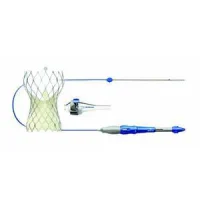According to a study published in JAMA, fewer than 1 in 10 eligible Medicare patients with low ejection fraction (EF) received an implantable cardioverter-defibrillator (ICD) within 1 year after the heart attack despite the fact that ICD implantation was associated with a lower risk of death at 2 years after implantation.
Approximately 350,000 people experience sudden cardiac death in the U.S. annually. Clinical trials have already established the benefit of primary prevention ICDs in patients with low EF. Since ICDs are not recommended within 40 days of a heart attack, ICD consideration is often susceptible to errors of omission during the transition of post-MI care between inpatient and outpatient care teams. Moreover, uncertainties regarding its effectiveness, treatment goals and procedural risks also discourage ICD implantation among older adults.
During this study, Sean D. Pokorney, M.D., M.B.A., of the Duke University Medical Center, Durham, N.C., and colleagues examined ICD implantation rates and associated mortality among 10,318 post-MI Medicare beneficiaries with an EF of 35 percent or less after MI, treated at 441 U.S. hospitals between 2007 and 2010. They found that cumulative 1-year ICD implantation rate was 8.1 percent. Those who did receive ICD within one year were younger and more likely to be male. They also had larger infarcts, prior coronary artery bypass graft procedures and evidence of cardiogenic shock during index hospitalisation as compared to patients who did not receive an ICD within 1 year.
ICD implantation reduced the risk of death by 36 percent at two years. The rate of early cardiology follow-up within 2 weeks after discharge was higher among patients who received an ICD within 1 year as compared to those who did not.
“Additional research is needed to determine evidence-based approaches to increase ICD implantation among eligible patients,” the authors write.
In an accompanying editorial, Robert G. Hauser, M.D., of the Minneapolis Heart Institute, Abbott Northwestern Hospital, Allina Health, Minneapolis points out that it is concerning that so few potentially ICD-eligible elderly patients are undergoing implantation despite its proven impact on survival and that this new report can help physicians discuss the risks and benefits of ICDs in older patients.
“Even though the use of ICDs for primary prevention may not seem to make as much sense for an 80-year-old patient as it does for a patient in his or her 50s or 60s, an older patient at risk for sudden cardiac death should have the same opportunity to choose potentially lifesaving therapy.”
Source: JAMA
Image Credit: Wikimedia Commons










